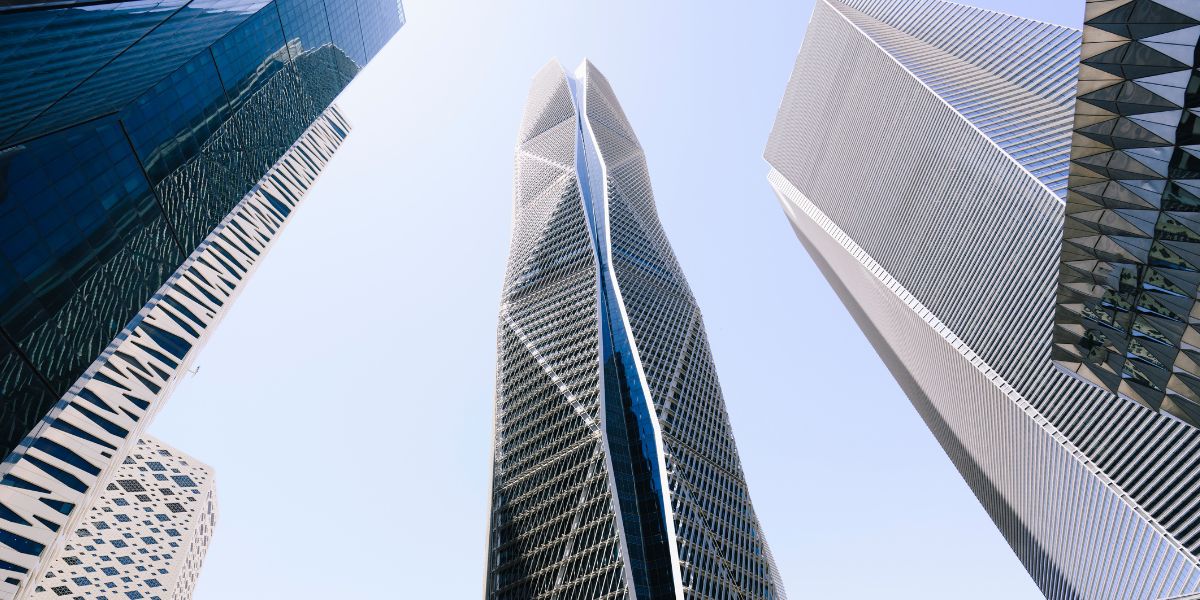Beyond Oil Money: How the Gulf is Reshaping Global Finance

Trillions of dollars of capital from the Gulf states are quietly remapping the global economy — one strategic co-investment at a time. These oil-rich nations, which possess long financial arms worth trillions collectively—are no longer content with simply holding traditional investments and waiting for returns. Instead, they are becoming strategic partners in major deals worldwide, leveraging their vast resources for both profit and national development. The implications reach far beyond the Middle East, affecting dealmakers, corporations, and governments across every continent. A new era of sovereign-led global investment has begun.
To understand this shift, it helps to look at the Gulf Cooperation Council (GCC) — a political and economic bloc of six states in the Arabian Peninsula: Saudi Arabia, the United Arab Emirates, Qatar, Kuwait, Oman, and Bahrain — which is home to some of the world’s most powerful sovereign wealth vehicles. Its major funds — including Saudi Arabia's Public Investment Fund (PIF), Abu Dhabi's Mubadala, Abu Dhabi Developmental Holding Company (ADQ), and the Qatar Investment Authority (QIA) — are accelerating their shift from passive portfolio investors to active co-investors in global transactions.
Fueled by oil windfalls and national diversification agendas, these funds are deploying capital into technology, renewables, infrastructure, and healthcare through joint deals with established private equity groups, global corporates, and institutional investors. Co-investing provides sovereign funds with three key advantages: diversification beyond traditional bond and real-estate holdings, the ability to participate in deals of unprecedented scale, and access to the sector expertise of their partners. The strategy also aligns with their domestic mandates — leveraging global partnerships to build capabilities at home.
For instance, PIF's mandate under Saudi Arabia's Vision 2030 is not just financial, but also developmental, requiring it to seed new industries and technology sectors locally. Mubadala and ADQ follow similar strategies in Abu Dhabi, utilizing international joint ventures such as the Abu Dhabi Hydrogen Alliance to secure know-how and technologies that can be transferred back into domestic markets.
Rather than focusing solely on capital allocation, Gulf funds now view co-investment as a tool for influence, risk management, and strategic spillovers. Their approach blends financial returns with industrial policy, governance innovations, and even diplomacy. The following sections analyze how these funds structure transactions, navigate regulatory barriers, and leverage partnerships to project economic power well beyond the Gulf.
But understanding the motivation is only the first step — the real story lies in how Gulf funds engineer these partnerships through carefully designed deal structures
How Gulf States’ Funds Structure Their Biggest Deals
Sovereign wealth funds (SWFs) in the Gulf states typically favor four structures:
- Minority stakes within investment groups, allowing sovereigns to diversify into global opportunities while limiting operational responsibility.
- 50/50 joint ventures, providing equal governance rights and ensuring industrial alignment.
- Anchored co-investment funds, where sovereigns commit early cornerstone capital to shape the investment pipeline while relying on specialized managers.
- Direct co-buys with private equity, offering maximum visibility and strategic alignment but carrying higher execution risk.
Each model strikes a balance between sovereign objectives and partner expectations. A defining feature of these partnerships is governance alignment, with built-in exit protocols, steering committees, and shared oversight mechanisms that reconcile the longer time horizons of sovereigns with the shorter return cycles of private partners. Mubadala’s anchor commitment to a biotech crossover fund exemplifies this balance, combining industrial policy objectives with professional fund management and sectoral expertise.

Importantly, co-investment is also a way to manage reputational and regulatory risks. When Gulf sovereigns team up with global blue-chip partners — established, financially strong companies with proven stability — it creates a layer of insulation against political sensitivities that might arise if they were acting alone. This makes co-investments especially valuable in Western markets subject to stringent foreign investment screening by authorities such as the United States’ Committee on Foreign Investment CFIUS. These models are not just theoretical; they shape real-world transactions across aviation, energy, healthcare, and technology, where Gulf investors are increasingly visible
Recent Transactions That Set the Tone
The co-investment playbook is now visible across multiple sectors. PIF and Ardian — a leading European private investment house managing over $160 billion in assets — recently acquired a 10% stake in Heathrow Airport, a textbook deal that spreads political and operational risk while anchoring a long-term strategic asset (10% PIF, 15% Ardian). In logistics, Mubadala and QIA joined I Squared Capital to back the Transportation Equipment Network (TEN), a North American trailer leasing platform, facilitating cross-border expansion.
In addition to transportation and logistics, energy has also become an exceptionally dynamic field. ADQ has launched a $25 billion partnership with Energy Capital Partners — a U.S.-based private equity firm specializing in energy and infrastructure — to build generation capacity serving the surging demand from data centers. Similarly, Mubadala’s investments in renewables — ranging from offshore wind projects in Europe to solar ventures in Asia — are almost always structured as co-investments with specialist operators or institutional peers, as seen in their cornerstone investment in PAG’s Asia Pacific platform, which focuses on solar power in Japan. In healthcare, Mubadala teamed up with CBC Group to acquire pharmaceutical portfolios in Asia, creating cross-border platforms that consolidate mature products and fund new therapies.
Technology is another favored domain. QIA has partnered with leading venture funds in Silicon Valley and Asia, backing late-stage tech firms with growth potential. These investments are often positioned as knowledge-transfer tools, equipping the Gulf with insights into disruptive sectors such as artificial intelligence, fintech, and biotech. Examples include QIA’s $1 billion Fund of Funds aimed at attracting top VC firms such as B Capital, Deerfield Management, and Rasmal Ventures, which focus on digital innovation, life sciences, and regional startup development, respectively. This program bridges funding gaps in Series A to C, driving sectoral expertise and regional expansion, and making the Gulf an emerging global hub for innovation. Yet headline-grabbing deals are only part of the picture — Gulf funds must also navigate complex regulatory landscapes and manage the political sensitivities that accompany sovereign capital.
Risk Management and Strategic Spillovers
Even with enormous balance sheets, Gulf SWFs must navigate tight regulatory screens. U.S. authorities have significantly expanded CFIUS reviews. Between 2023 and 2024, CFIUS blocked or delayed many acquisitions and imposed roughly $88 million in penalties (including a record $60 million fine in 2024) on parties that violated mitigation agreements or failed to comply with mandatory filing requirements. Europe and the UK have likewise strengthened foreign investment scrutiny: the EU’s 2024 FDI screening rules broaden the sectors subject to mandatory review, harmonize procedures across all member states, and empower the European Commission to intervene in national reviews on security grounds. Meanwhile, many foreign stakes in the UK are now subject to review under the National Security and Investment Act. To navigate these stricter regimes, Gulf funds adjust their deal structures accordingly. For example, the U.S. Foreign Investment Risk Review Modernization Act (FIRRMA), which governs national security reviews of foreign investments, now requires a CFIUS filing for any sizable stake held by a foreign government in a critical technology or infrastructure firm. Gulf SWFs mitigate this by investing via passive fund vehicles or foreign-managed platforms (where the General Partner is not a government affiliate) to avoid triggering mandatory review. They likewise tailor deal sizes and structures to meet EU and UK screening thresholds. Notably, a 2025 U.S. Treasury memo explicitly welcomed passive SWF capital, signaling Washington’s intent to facilitate inflows structured without governance rights.
Co-investing also mitigates reputational risk. Syndicating deals with established international partners provides ‘political cover’ and ensures adherence to global norms. A U.S.–UAE joint statement made this explicit, calling for partnerships that include ‘safeguards to protect national security’ and promote ‘trusted investments’ consistent with best practices. These deals often act as both investments and diplomatic tools. Gulf SWFs have created joint investment vehicles with friendly governments to channel capital into those markets. For example, Saudi and UAE funds set up platforms with the governments of Egypt and Iraq to deploy Gulf capital locally. Such channels bring funding and projects to host countries while deepening political and economic ties for the Gulf states.

Domestically, SWF co-investments are engineered for local impact. Abu Dhabi’s Mubadala explicitly ties its biotech co-investments to UAE goals – it launched Mubadala Bio to connect life-science venture partnerships with domestic drug manufacturing and R&D. In the energy sector ADQ has also been active, as noted previously, forming a 50-50 joint venture with Energy Capital Partners to invest over $25 billion in new power generation projects primarily in the U.S., aimed at powering data centers and supporting the growing demands of AI infrastructure. These initiatives build local resilience, technical capacity, and help incubate new industries and skills at home. This balancing act between ambition and scrutiny has made Gulf sovereigns exceptionally meticulous, embedding compliance and control mechanisms into the very fabric of their deals.
Calibration, Compliance, and Dealcraft
Large Gulf SWF deals are engineered with precision: contracts detail multi-stage execution, funding schedules, and exit mechanics. In the ADQ–Energy Capital joint venture, each partner outlined phased equity contributions, starting with $2.5 billion each in the first round of funding, and equal board representation at every phase. The PIF–Heathrow consortium similarly embedded tag-along/drag-along and pre-agreed sale clauses to streamline any exit under regulatory review, ensuring that minority investors can sell their shares if the majority holders exit (tag-along) or are required to join a sale initiated by the majority holders (drag-along).
Gulf SWFs insist on active oversight. In the TEN investment, Mubadala and QIA each secured a board seat and veto authority alongside I Squared. Joint ventures often include step-in rights: if a project misses targets, or partners diverge, the SWF can halt further funding, trigger a buyout, or reallocate equity. The net effect is that these transactions function like tightly managed consortia, sharing not just capital but ongoing governance and control. Compliance is also embedded from the outset. Gulf SWFs conduct exhaustive due diligence (anti-bribery, sanctions, financial) on every target and often involve outside auditors. Contracts include comprehensive representations and warranties, and any regulatory approvals are negotiated upfront. For example, co-investment documents may require that the seller obtain CFIUS or EU clearance as a closing condition. In practice, structuring a Gulf co-investment involves building in compliance checkpoints, reporting covenants, and oversight mechanisms from the outset.

The magnitude of this activity is already substantial. Industry trackers estimate Gulf SWFs deployed roughly 55 billion dollars in international co-investment deals in the first nine months of 2024, maintaining the high level of activity seen in 2023 and reflecting strong interest not only in traditional markets like the US and UK but also in Asia, particularly China. For sponsors and co-investors, this means framing deals not just in terms of returns, but also in terms of shared strategy. Modern term sheets routinely specify how a project will generate local economic benefits – jobs, technology transfer, supply-chain development – alongside financial metrics. In short, firms must treat Gulf co-investors as long-term strategic partners and proactively demonstrate alignment with both parties’ goals. The precision of these transactions points to a larger truth: Gulf sovereigns are no longer just financiers, but strategic actors shaping the future of global markets.
Beyond Capital: Gulf SWFs as Shapers of the Global Economy
For corporates, institutional investors, and fund managers, Gulf sovereigns represent a new category of strategic partner—no longer just limited partners, but co-investors with patient capital, industrial mandates, and growing global ambitions. This model fundamentally reshapes dealmaking by enabling Gulf funds to simultaneously pursue financial returns and national development objectives, creating opportunities for global firms to embed sovereign partners into the strategic direction of high-growth sectors.
The trajectory ahead extends far beyond traditional co-investment models. With Gulf sovereign wealth fund assets projected to reach $18 trillion by 2030—a 50% jump from current levels—these financial giants are positioned to reshape entire sectors through what industry observers term ‘sovereign-led market making’. As geopolitical competition intensifies around artificial intelligence, climate technologies, and quantum computing, Gulf sovereigns are uniquely positioned to bridge East-West investment flows while financing the infrastructure of tomorrow. The next decade will likely see these funds evolving from co-investors to co-architects of global economic systems, wielding their patient capital to shape critical technologies and making partnerships with them not just financially attractive but strategically essential for any organization seeking to compete in the post-2030 economy.
